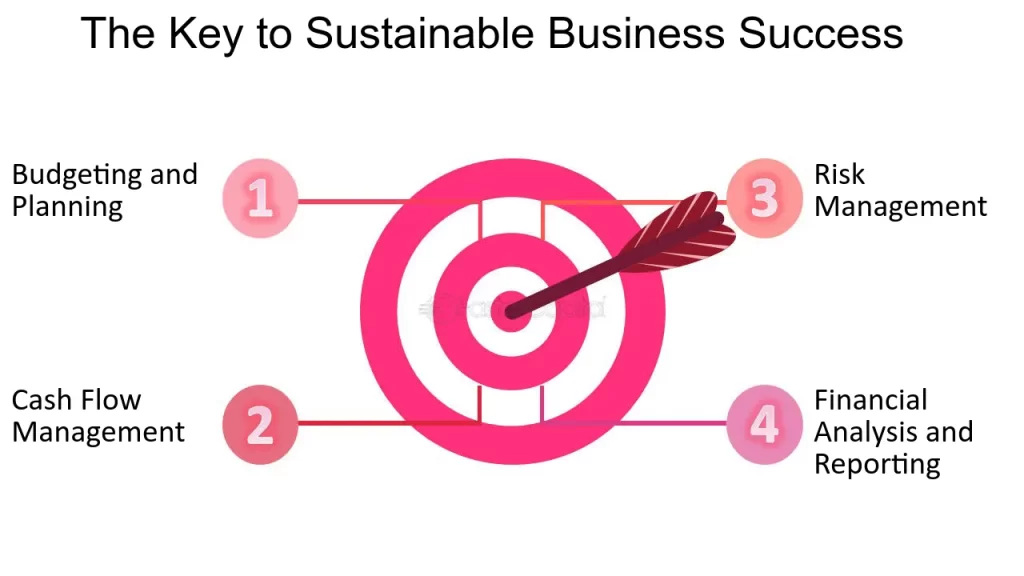

What is business management? Business management is the process of planning, organizing, leading, and controlling the resources of an organization in order to achieve its goals.
Editor’s Note: “What is business management” has been published today to help business leaders, entrepreneurs and students understand what business management is, and how it can help them achieve their goals.
After doing some analysis and digging, we put together this what is business management guide to help you make the right decision.
Key differences or Key takeaways:
| Type | Meaning |
|---|---|
| Planning | Setting goals and objectives for the organization |
| Organizing | Arranging resources and assigning tasks to achieve goals |
| Leading | Motivating and directing employees to achieve goals |
| Controlling | Monitoring progress and making adjustments to ensure goals are achieved |
Transition to main article topics:
What is Business Management
Business management is a broad and multifaceted field, encompassing a wide range of activities and responsibilities. At its core, business management is about planning, organizing, leading, and controlling the resources of an organization in order to achieve its goals. These core activities can be further broken down into ten key aspects:
- Planning: Setting goals and objectives for the organization
- Organizing: Arranging resources and assigning tasks to achieve goals
- Leading: Motivating and directing employees to achieve goals
- Controlling: Monitoring progress and making adjustments to ensure goals are achieved
- Decision-making: Identifying and choosing the best course of action
- Communication: Exchanging information and ideas with employees, customers, and other stakeholders
- Problem-solving: Identifying and resolving problems that arise in the workplace
- Teamwork: Working with others to achieve common goals
- Ethics: Making decisions and taking actions that are consistent with ethical principles
- Innovation: Developing new ideas and products to improve the organization
These ten key aspects are essential for any business that wants to achieve success. By understanding and applying these aspects, businesses can improve their efficiency, productivity, and profitability.
Planning
Planning is the foundation of business management. It involves setting goals and objectives for the organization, and developing a plan to achieve those goals. Planning helps businesses to stay focused and organized, and to make informed decisions about the future.
- Facet 1: Goal Setting: Goal setting is the process of identifying and defining what the organization wants to achieve. Goals should be specific, measurable, achievable, relevant, and time-bound.
- Facet 2: Objective Setting: Objectives are specific, measurable, and time-bound targets that contribute to the achievement of goals. Objectives should be aligned with the organization’s mission, vision, and values.
- Facet 3: Strategy Development: Strategy development is the process of creating a plan to achieve the organization’s goals and objectives. Strategies should be based on a thorough analysis of the internal and external environment.
- Facet 4: Resource Allocation: Resource allocation is the process of assigning resources to different activities and projects. Resources include human resources, financial resources, and physical resources.
Planning is an essential part of business management. By setting goals and objectives, developing strategies, and allocating resources, businesses can improve their chances of success.
Suggested read: Unlock the Secrets of Business Administration and Management: Discoveries and Insights Await
Organizing
Organizing is the process of arranging resources and assigning tasks to achieve goals. It is an essential part of business management, as it helps businesses to operate efficiently and effectively. Without proper organization, businesses would be chaotic and unproductive.
There are many different ways to organize a business. Some common methods include:
- Functional organization: This type of organization groups employees by their function, such as marketing, finance, and operations.
- Divisional organization: This type of organization groups employees by product or service line.
- Matrix organization: This type of organization combines functional and divisional structures.
The best way to organize a business will vary depending on its size, industry, and goals. However, all businesses need to have some form of organization in order to be successful.
Here are some of the benefits of organizing a business:
- Improved efficiency: When employees are organized, they can work more efficiently and productively.
- Reduced costs: Organizing a business can help to reduce costs by eliminating waste and duplication.
- Improved customer service: When employees are organized, they can provide better customer service.
- Increased employee morale: When employees feel like they are part of a well-organized team, they are more likely to be happy and productive.
Organizing a business is an essential part of business management. By taking the time to organize your business, you can improve efficiency, reduce costs, and increase employee morale.
Table: The Connection Between Organizing and Business Management
| Organizing | Business Management |
|---|---|
| Arranging resources and assigning tasks to achieve goals. | The process of planning, organizing, leading, and controlling the resources of an organization in order to achieve its goals. |
| Helps businesses to operate efficiently and effectively. | Essential for businesses to be successful. |
| Benefits of organizing include improved efficiency, reduced costs, improved customer service, and increased employee morale. | Organizing is a key component of business management and helps businesses to achieve their goals. |
Leading
Within the realm of business management, the significance of leading cannot be overstated. It encompasses the art of motivating and directing employees towards the accomplishment of organizational objectives. This multifaceted process involves several key facets that contribute to the overall success of any business venture.
-
Facet 1: Establishing a Clear Vision
Effective leadership begins with establishing a clear and compelling vision for the organization. This vision serves as a guiding star, inspiring employees to align their efforts with the company’s long-term goals. By articulating a compelling vision, leaders create a sense of purpose and direction, fostering a shared understanding of what the organization stands for and aspires to achieve.
-
Facet 2: Empowering Employees
Suggested read: Unveiling the Secrets of Artist Business Cards: Tips and Tricks for Unmatched Impact
Empowering employees is crucial for fostering a culture of ownership and accountability within the organization. This involves delegating authority and responsibility, providing employees with the necessary resources and support to perform their roles effectively. By empowering employees, leaders create a sense of trust and respect, encouraging them to take initiative and contribute their full potential to the organization’s success.
-
Facet 3: Providing Motivation and Recognition
Motivation is the key to driving employee performance and productivity. Effective leaders understand the importance of recognizing and rewarding employee achievements. This can take various forms, such as verbal praise, financial incentives, or opportunities for professional development. By providing motivation and recognition, leaders create a positive work environment where employees feel valued and appreciated, fostering a sense of loyalty and commitment to the organization.
-
Facet 4: Creating a Culture of Collaboration
Collaboration is essential for fostering a cohesive and productive work environment. Leaders play a pivotal role in creating a culture where employees feel comfortable sharing ideas, working together, and supporting each other. By promoting collaboration, leaders break down barriers between departments and individuals, fostering a sense of teamwork and collective responsibility towards achieving organizational goals.
In conclusion, the process of leading involves a combination of establishing a clear vision, empowering employees, providing motivation and recognition, and creating a culture of collaboration. By effectively implementing these facets, leaders can create a high-performing work environment where employees are motivated, engaged, and committed to the organization’s success.
Controlling
Controlling is the process of monitoring progress and making adjustments to ensure that goals are achieved. It is an essential part of business management, as it allows businesses to track their progress, identify problems, and take corrective action.
-
Facet 1: Establishing Performance Standards
The first step in controlling is to establish performance standards. These standards define what is expected of employees and how their performance will be measured. Performance standards should be specific, measurable, achievable, relevant, and time-bound (SMART).
-
Facet 2: Measuring Performance
Suggested read: Franchise Business for Sale – Find Profitable Opportunities Near You
Once performance standards have been established, the next step is to measure performance. This can be done through a variety of methods, such as observation, surveys, and reports. It is important to measure performance regularly so that any problems can be identified early on.
-
Facet 3: Comparing Performance to Standards
Once performance has been measured, it is important to compare it to the established performance standards. This will help to identify any areas where performance is falling short.
-
Facet 4: Taking Corrective Action
If performance is not meeting standards, it is important to take corrective action. This may involve changing the work process, providing additional training, or disciplining employees.
Controlling is an essential part of business management. By monitoring progress and making adjustments, businesses can ensure that they are on track to achieve their goals.
Decision-making
Decision-making is a crucial aspect of business management. It involves identifying and choosing the best course of action in order to achieve organizational goals. Effective decision-making requires a systematic and analytical approach, considering various factors and potential outcomes.
-
Facet 1: Problem Identification and Analysis
The first step in decision-making is to identify and analyze the problem or opportunity at hand. This involves gathering information, understanding the root causes, and defining the scope of the decision.
-
Facet 2: Generation of Alternatives
Suggested read: Uncover Business Analyst Intern Insights: A Gateway to Success
Once the problem has been identified, the next step is to generate a range of potential solutions or alternatives. This requires brainstorming, research, and considering different perspectives.
-
Facet 3: Evaluation of Alternatives
The generated alternatives are then evaluated based on various criteria, such as feasibility, cost, risk, and potential impact. This involves weighing the pros and cons of each option and conducting thorough analysis.
-
Facet 4: Selection of the Best Alternative
After evaluating the alternatives, the best course of action is selected. This decision should be based on sound judgment, considering the organization’s goals, values, and resources.
Effective decision-making is essential for the success of any business. By following a systematic approach and considering various factors, businesses can make informed decisions that lead to positive outcomes and contribute to the achievement of their objectives.
Communication
Communication is a crucial aspect of business management, as it enables the effective exchange of information and ideas among employees, customers, and other stakeholders. This exchange is essential for aligning actions, coordinating efforts, and achieving organizational goals.
Effective communication within an organization fosters a sense of transparency, trust, and collaboration. It allows employees to understand their roles and responsibilities, share knowledge and expertise, and contribute to decision-making processes. Open and regular communication channels help to minimize misunderstandings, resolve conflicts, and create a positive work environment.
Communication with customers is equally vital for building strong relationships, understanding their needs and preferences, and responding to their feedback. Businesses that prioritize customer communication are better equipped to retain customers, increase satisfaction, and drive growth. Clear and consistent communication helps to manage customer expectations, address concerns, and build brand loyalty.
Effective communication with stakeholders, such as investors, suppliers, and community members, is also essential for maintaining positive relationships and ensuring the long-term success of an organization. By keeping stakeholders informed and engaged, businesses can build trust, secure support, and navigate external challenges.
Suggested read: Unlock the Secrets of Apple Maps: Discover the Path to Business Success
In summary, communication is a fundamental component of business management, enabling organizations to align efforts, build relationships, and achieve their goals. Effective communication fosters a positive work environment, enhances customer satisfaction, and strengthens stakeholder engagement, ultimately contributing to the success and sustainability of any business.
Table: The Connection Between Communication and Business Management
| Communication | Business Management |
|---|---|
| Exchanging information and ideas with employees, customers, and other stakeholders. | The process of planning, organizing, leading, and controlling the resources of an organization in order to achieve its goals. |
| Fosters a sense of transparency, trust, and collaboration within an organization. | Essential for aligning actions, coordinating efforts, and achieving organizational goals. |
| Builds strong relationships and enhances customer satisfaction. | Helps businesses to retain customers, increase satisfaction, and drive growth. |
| Maintains positive relationships and ensures the long-term success of an organization. | Enables businesses to build trust, secure support, and navigate external challenges. |
Problem-solving
Problem-solving is an essential skill for business managers. It is the ability to identify and resolve problems that arise in the workplace in order to achieve organizational goals. Effective problem-solving requires a systematic and analytical approach, considering various factors and potential outcomes.
-
Facet 1: Identifying and Defining the Problem
The first step in problem-solving is to identify and define the problem clearly. This involves gathering information, understanding the root causes, and defining the scope of the problem. A well-defined problem statement sets the stage for effective problem-solving.
-
Facet 2: Generating and Evaluating Solutions
Once the problem has been defined, the next step is to generate and evaluate potential solutions. This requires brainstorming, research, and considering different perspectives. Each solution should be evaluated based on its feasibility, cost, risk, and potential impact.
-
Facet 3: Selecting and Implementing the Best Solution
After evaluating the potential solutions, the best course of action is selected. This decision should be based on sound judgment, considering the organization’s goals, values, and resources. The selected solution is then implemented and monitored to ensure its effectiveness.
-
Facet 4: Monitoring and Evaluating the Solution
Suggested read: Unveil the Secrets of Business Professional Outfits for Women: A Guide to Success
Once the solution has been implemented, it is important to monitor and evaluate its effectiveness. This involves tracking progress, identifying any unintended consequences, and making adjustments as needed. Regular evaluation ensures that the problem has been resolved and that the solution is meeting the intended objectives.
Problem-solving is a critical aspect of business management. By following a systematic approach and considering various factors, business managers can effectively identify and resolve problems that arise in the workplace, leading to improved decision-making and organizational success.
Teamwork
In the realm of business management, teamwork plays a pivotal role in driving organizational success. It involves individuals working together, leveraging their unique skills and perspectives to achieve common goals. This collaborative approach fosters synergy, improves efficiency, and enhances overall performance.
-
Facet 1: Collaboration and Communication
Effective teamwork hinges on open communication and collaboration among team members. Sharing ideas, knowledge, and resources creates a collective pool of expertise that can be harnessed to solve problems and drive innovation.
-
Facet 2: Role Definition and Specialization
Clear definition of roles and responsibilities ensures that each team member understands their contribution to the collective effort. Specialization allows individuals to focus on their areas of expertise, maximizing their impact.
-
Facet 3: Trust and Support
Building trust and establishing a supportive team environment are crucial. When team members trust and support each other, they are more likely to take risks, share knowledge, and work together seamlessly.
-
Facet 4: Conflict Resolution and Decision-Making
Suggested read: Unlock the Secrets of Coaching Business Coaches: Discoveries for Business Success
Teamwork involves navigating conflicts and making decisions collectively. Effective teams establish mechanisms for resolving conflicts constructively and reaching consensus on important matters.
By fostering teamwork and collaboration, businesses can create a dynamic and engaged workforce that is capable of achieving extraordinary results. Teamwork aligns individual efforts with organizational goals, leading to increased productivity, innovation, and overall success.
Ethics
In the realm of business management, ethics plays a pivotal role in shaping decision-making and guiding actions. Ethical principles serve as a compass, ensuring that organizations operate in a responsible and sustainable manner, fostering trust and integrity.
-
Facet 1: Integrity and Transparency
Business management requires unwavering integrity and transparency. Adhering to ethical principles means being honest and accountable in all dealings, fostering trust among stakeholders and maintaining a positive reputation.
-
Facet 2: Respect for Employees and Customers
Ethical business management entails treating employees and customers with respect and dignity. This includes creating a fair and inclusive work environment, valuing diversity and individual rights, and prioritizing customer satisfaction through responsible practices.
-
Facet 3: Environmental Sustainability
Businesses have a responsibility to operate in an environmentally sustainable manner. Ethical management involves adopting practices that minimize environmental impact, conserve resources, and contribute to a greener future.
-
Facet 4: Corporate Social Responsibility
Suggested read: Uncover the Secrets of Business Formal Attire for Women: A Guide to Success
Ethical business management extends beyond profit-making to encompass corporate social responsibility. Organizations should actively engage in initiatives that benefit the community, support social causes, and promote the greater good.
By embracing ethical principles, businesses can build a strong foundation for long-term success. Ethical decision-making fosters trust, attracts loyal customers, motivates employees, and contributes to a positive brand image. Ultimately, aligning business management with ethical considerations leads to a sustainable and responsible organization that positively impacts all stakeholders.
Innovation
Innovation, the lifeblood of business management, plays a pivotal role in driving organizational growth and success. It involves developing new ideas, products, and processes to improve the organization’s operations, offerings, and overall performance.
Innovation is closely intertwined with business management as it serves as a catalyst for achieving strategic objectives. By embracing innovation, organizations can stay ahead of the competition, adapt to changing market demands, and create value for their customers. Innovation fosters a culture of creativity, risk-taking, and continuous improvement, which are essential for businesses to thrive in today’s dynamic business environment.
Real-life examples abound where innovation has transformed businesses and industries. Apple’s introduction of the iPhone revolutionized the mobile phone market, while Amazon’s cloud computing services have reshaped the IT landscape. These innovations have not only generated substantial revenue but have also created entirely new markets and redefined customer expectations.
The practical significance of understanding the connection between innovation and business management lies in its ability to guide decision-making and resource allocation. By recognizing the importance of innovation, organizations can prioritize research and development, invest in training and development programs for employees, and create a supportive environment that encourages experimentation and out-of-the-box thinking.
In conclusion, innovation is an indispensable component of business management. By embracing innovation and fostering a culture of creativity and continuous improvement, organizations can drive growth, stay ahead of the competition, and create value for their customers and stakeholders.
Table: The Connection Between Innovation and Business Management
| Innovation | Business Management |
|---|---|
| Developing new ideas and products to improve the organization | The process of planning, organizing, leading, and controlling the resources of an organization in order to achieve its goals |
| Serves as a catalyst for achieving strategic objectives | Provides a framework for guiding innovation efforts and aligning them with organizational goals |
| Fosters a culture of creativity, risk-taking, and continuous improvement | Creates a supportive environment that encourages innovation and rewards experimentation |
| Drives growth, stays ahead of the competition, and creates value | Improves organizational performance, increases market share, and enhances customer satisfaction |
Frequently Asked Questions
This section addresses common questions about “what is business management” to provide a comprehensive understanding of the subject.
Question 1: What is business management?
Suggested read: Uncover Business Secrets: Dive into Nebraska's Entity Search
Business management encompasses the planning, organizing, leading, and controlling of resources to achieve organizational goals. It involves setting objectives, allocating resources, directing employees, and monitoring progress.
Question 2: Why is business management important?
Effective business management is crucial for organizations to operate efficiently, achieve their objectives, and adapt to dynamic market conditions. It fosters alignment, coordination, and decision-making within the organization.
Question 3: What are the key aspects of business management?
Core aspects include planning, organizing, leading, controlling, decision-making, communication, problem-solving, teamwork, ethics, and innovation. These elements work in synergy to drive organizational success.
Question 4: What are the benefits of effective business management?
Well-managed businesses experience improved efficiency, increased productivity, enhanced customer satisfaction, higher employee morale, and stronger financial performance.
Question 5: What are the challenges of business management?
Common challenges include managing change, navigating economic fluctuations, fostering innovation, and ensuring ethical conduct within the organization.
Question 6: How can I improve my business management skills?
Suggested read: Unveiling the Secrets of Realtor Business Cards: A Guide to Success
Consider pursuing education or training programs, seeking mentorship from experienced professionals, and continuously reflecting on and improving your practices.
Summary:
Business management is a multifaceted discipline that plays a critical role in organizational success. By understanding the key aspects, benefits, and challenges of business management, individuals can contribute effectively to the achievement of organizational goals.
Transition to the next article section:
For further exploration, refer to the following article sections that delve into specific aspects of business management in greater detail.
Tips for Effective Business Management
Effective business management is essential for organizational success. Here are some practical tips to enhance your management skills and drive positive outcomes:
Tip 1: Establish Clear Goals and Objectives
Define specific, measurable, achievable, relevant, and time-bound (SMART) goals. Communicate these goals clearly to your team to ensure alignment and focus.
Tip 2: Plan and Organize Effectively
Develop a comprehensive plan outlining the steps, resources, and timelines required to achieve your goals. Organize tasks and assign responsibilities to team members to ensure efficient execution.
Tip 3: Lead with Purpose and Motivation
Inspire and motivate your team by clearly articulating the organization’s vision and values. Empower employees to take ownership of their roles and provide regular feedback to foster their growth and development.
Tip 4: Communicate Openly and Effectively
Establish clear communication channels and encourage open dialogue within your team. Provide regular updates, listen to feedback, and address concerns promptly to maintain a positive and productive work environment.
Tip 5: Solve Problems Creatively and Proactively
Adopt a proactive approach to problem-solving. Identify potential issues early on and develop innovative solutions. Encourage collaboration and brainstorming to generate diverse perspectives and find effective solutions.
Tip 6: Embrace Innovation and Adaptability
Foster a culture of innovation and encourage employees to challenge the status quo. Embrace change and adapt to new market trends and technologies to stay ahead of the competition.
Tip 7: Monitor and Evaluate Progress Regularly
Track your progress towards goals and objectives. Conduct regular evaluations to identify areas for improvement and make necessary adjustments. Use data and feedback to inform decision-making and drive continuous improvement.
Tip 8: Foster a Positive and Ethical Work Environment
Create a work environment that values integrity, respect, and diversity. Promote ethical conduct and ensure compliance with legal and industry standards to build a strong and sustainable organization.
Summary:
Effective business management requires a combination of strategic planning, strong leadership, effective communication, innovative thinking, problem-solving abilities, and a commitment to ethical conduct. By implementing these tips, you can enhance your management skills, drive organizational success, and achieve lasting positive outcomes.
Transition to the article’s conclusion:
Remember, business management is an ongoing journey of learning, adaptation, and continuous improvement. Embrace new challenges, seek feedback, and strive to develop your skills as a manager to lead your team and organization towards success.
Conclusion
In conclusion, “what is business management” encompasses a comprehensive set of activities and responsibilities that are essential for the success of any organization. Through planning, organizing, leading, and controlling resources, effective business management enables organizations to achieve their goals, adapt to changing market conditions, and create value for stakeholders.
The key aspects of business management, including decision-making, communication, problem-solving, teamwork, ethics, and innovation, work synergistically to drive organizational performance and create a positive work environment. By embracing these principles and continuously developing their skills, business managers can contribute significantly to the success and sustainability of their organizations.
Youtube Video:






